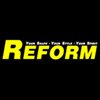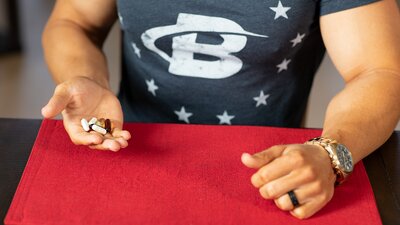A considerable chunk of my workday is always spent answering people's questions about prohormones and steroids. Of course, one of the biggest concerns people have is about estrogen and estrogen related side effects. Right behind that however are questions about DHT. It seems that people have the misconception that DHT is some evil androgen byproduct that serves no purpose in the body but to make our prostates blow up and our hair fall out.
The real situation is of course much more complex. DHT is one of those good guy/bad guy hormones that is sorely misunderstood. For many people, it is NOT something that you want to reduce or eliminate in the body.
For some others though, keeping DHT levels under control is probably a prudent course of action. Knowing the facts about DHT will help you decide just which group you belong to.
Testosterone Is A Prohormone?
The main androgen secreted by the testes is of course testosterone. However, in most of the body, the androgenic signal is not carried through by testosterone. In these tissues, which include the brain (CNS), skin, genitals—practically everything but muscle—the active androgen is actually DHT. Testosterone in this case simply acts as a prohormone that is converted to the active androgen DHT by the action of the enzyme 5alpha reductase (5-AR).
5-AR is concentrated heavily in practically every androgen dependent area of the body except for skeletal muscle. This results in very little testosterone actually getting through to these parts of the body to bind to androgen receptors. Instead, it is quickly transformed into DHT, which then interacts with receptors.
This transformation serves a very important biological function in these tissues. You see, DHT is a much stronger androgen than testosterone—it binds about 3-5 times more strongly to the androgen receptor. If you took away 5-AR from these tissues and blocked the formation of DHT, then you would see some dramatic changes in physiology.
A good case in point is demonstrated in male pseudohermaphroditism due to congenital 5-AR deficiency. This is a relatively rare disorder, however it is actually quite common in the Dominican Republic. In this disorder, males are born with little or no 5-AR enzyme. They have ambiguous genitalia and are often raised as girls. When puberty occurs, their testosterone levels elevate normally although their DHT levels remain very low. Their musculature develops normally like that of other adults, however, they end up with little or no pubic/body hair and underdeveloped prostate and penis. Their libido and sexual function is often disrupted also.
Testosterone Is The Active Androgen In Muscle
Skeletal muscle is unique from other androgen dependent tissues in the body. It actually contains little or no 5-AR, so little or no DHT is actually formed in the muscle. In addition to this, any DHT that is formed, or that is already present in the blood and travels to the muscle, is quickly deactivated by an enzyme called 3alpha-hydroxysteroid reductase (3a-HSD).
So at least as far as muscle is concerned, testosterone is the primary active androgen. This is not to say that administering exogenous DHT is not without any anabolic effect. It actually does have some anabolic activity in the muscle, albeit significantly weaker than that of an equal amount of testosterone. This is due to its quick breakdown by 3a-HSD into the weak metabolite 5alpha-androstan-3a, 17b-diol. If this enzyme were somehow blocked, it is likely that DHT would exhibit very potent anabolic effects on muscle.
It is important to understand that even though testosterone is the active androgen in muscle, and DHT exhibits relatively little direct anabolic effects on muscle in men, DHT is still very important for the full performance enhancement effects from testosterone. What I specifically mean here are the effects of DHT on the central nervous system that lead to increased neurological efficiency (strength), and increased resistance to psychological and physical stress—not to mention optimal sexual function and libido.
I have heard several anecdotal reports of individuals who have stacked testosterone with Proscar (a 5-AR inhibitor) and have noticed significantly reduced performance enhancement effects. What's going on here? We know it couldn't be due to the inhibition of the direct anabolic activity of testosterone on muscle anabolism. Most likely it is due to the reduction of androgenic effects in other parts of the body that contribute to the ergogenic effects. Specifically the CNS, which is stimulated by androgens to increase neural output leading to greater strength and greater recoverability. Another possibility is a reduction in the production of androgen dependent liver growth factors (such as IGF-1), since DHT is an important androgen in the liver.
Anti-Estrogen Effects Of DHT
One important function of DHT in the body that does not get much discussion is its antagonism of estrogen. Some men that take Proscar learn this the hard way—by developing a case of gynecomastia. By reducing DHT's protection against estrogen in the body, these men have fallen victim to its most dreaded ramification-bitch tits.
How does DHT protect against estrogen? There are at least three ways that this likely occurs. First of all, DHT directly inhibits estrogens activity on tissues. It either does this by acting as a competitive antagonist to the estrogen receptor or by decreasing estrogen-induced RNA transcription at a point subsequent to estrogen receptor binding.
Second of all, DHT and its metabolites have been shown to directly block the production of estrogens from androgens by inhibiting the activity of the aromatase enzyme. The studies done in breast tissue showed that DHT, androsterone, and 5alpha-androstandione are potent inhibitors of the formation of estrone from androstenedione. 5alpha-androstandione was shown to be the most potent, while androsterone was the least.
Lastly, DHT acts on the hypothalamus/pituitary to decrease the secretion of gonadotropins. By decreasing the secretion of gonadotropins you decrease the production of the raw materials for estrogen production testosterone and androstenedione (DHT itself cannot aromatize into estrogens). This property of DHT comes into particular utility when it is administered exogenously, and this is to be discussed in further detail in the next section.
DHT, Estrogen, And The Prostate
When it comes to sex hormones, few things are as misunderstood by the general consumer as the relationship of the prostate to DHT. The inaccurate and overly simplistic attitude that DHT is responsible for prostate hypertrophy, and even prostate cancer predominates amongst most people.
The real situation is, of course, much more complex. One must understand that there are marked differences between healthy prostate growth (developmental growth), prostate growth due to BPH, and cancerous prostate growth.
The first period of prostate growth, deemed developmental growth, is connected to puberty and the testicular secretion of androgens. This takes the prostate from its prepubertal dormancy to the normal sized, healthy, and functional prostate gland of an adult. During the early and mid adult years the prostate stays at this stage, despite the constant levels of high levels of androgens in the body. However, if androgens are blocked in the body then the adult prostate will shrink in size. This can occur by castration, or even by blockade of 5-AR (recall that DHT is the active androgen in the prostate).
Later in life, there is often a second stage of growth. This growth is deemed benign prostate hypertrophy (BPH) and this growth occurs in a wholly different hormonal environment than that of developmental growth. Evidence is mounting that the existence of a high estrogen/androgen ratio—a condition common in older men—is highly correlated to the development of BPH.
Experimental studies have shown the inability of androgens with saturated A rings (DHT related) to induce an initial condition of prostate hypertrophy. These compounds are non-aromatizable. While, aromatizable androgens on the other hand, such as testosterone or androstenedione can induce hyperplasic modifications of the prostate of monkeys, but these effects are reversed by addition of an aromatase inhibitor.
So apparently, estrogen is a causative factor in BPH. Or, probably more accurately, estrogen in the presence of a minimum, permissive amount of androgen.
None of this may come as news to many of you, but I bet that very few of you know that DHT can actually be used to treat BPH!! How can it do that? It basically does this by replacing the testosterone in the body, which then has the effect of reducing the amount of estrogen in the body.
As I started to explain before, DHT is a strong androgen that will signal the pituitary to decrease the production of gonadotropins. The decrease in gonadotropins will then cause less testosterone to be produced which will in turn cause the estrogen levels to drop. The resulting change in the hormonal milieu (high DHT, low estrogen) then apparently results in a regression of BPH. The clinical application of this theory is discussed in US patent 5,648,350 Dihydrotestosterone for use in androgenotherapy.
The following two paragraphs taken from the patent study illustrates the results:
In 27 subjects in which the plasma DHT level was controlled, so as to modulate the administered doses, said levels have been increased to 2.5 to 6 ng/ml. There resulted a decrease in gonadotrophy as well as in the plasma levels of testosterone which exceeded at least 1.5 ng/ ml (from 0.5 to 1.4 according to the case); as to the estradiol plasma levels, these decreased by 50% .
Among this group of subjects, the volume of the prostate diminished significantly, as was evaluated by ultrasound and by PSA (Prostate Specific Antigen). The mean volume of the prostates was from 31.09. + .16.31 grams before treatment and from 26.34. + -. 12.72 grams after treatment, for a mean reduction of 15.4%, the treatment having a mean duration of 1.8 years with DHT (P= 0.01).
The information from this study kind of flies in the face of the traditional thinking concerning BPH now doesn't it?
Conclusion
Unfortunately, people seem to have a natural tendency to classify things as either good or bad, black or white with absolutely no gray areas. DHT (like estrogen) has recently been on everyone's bad list, and is often considered to be a hormone that serves no function in the body except to cause harm. Now that you have all the necessary facts you can ultimately see, this view is far from the truth.
In my opinion, the widespread use of 5-AR inhibitors such as Proscar as a prophylactic agent for people that don't really need it should be highly reconsidered. After reading this I hope you'll agree with me or at least keep an open mind on this sensitive subject. In other words, why don't you just give DHT a break.

